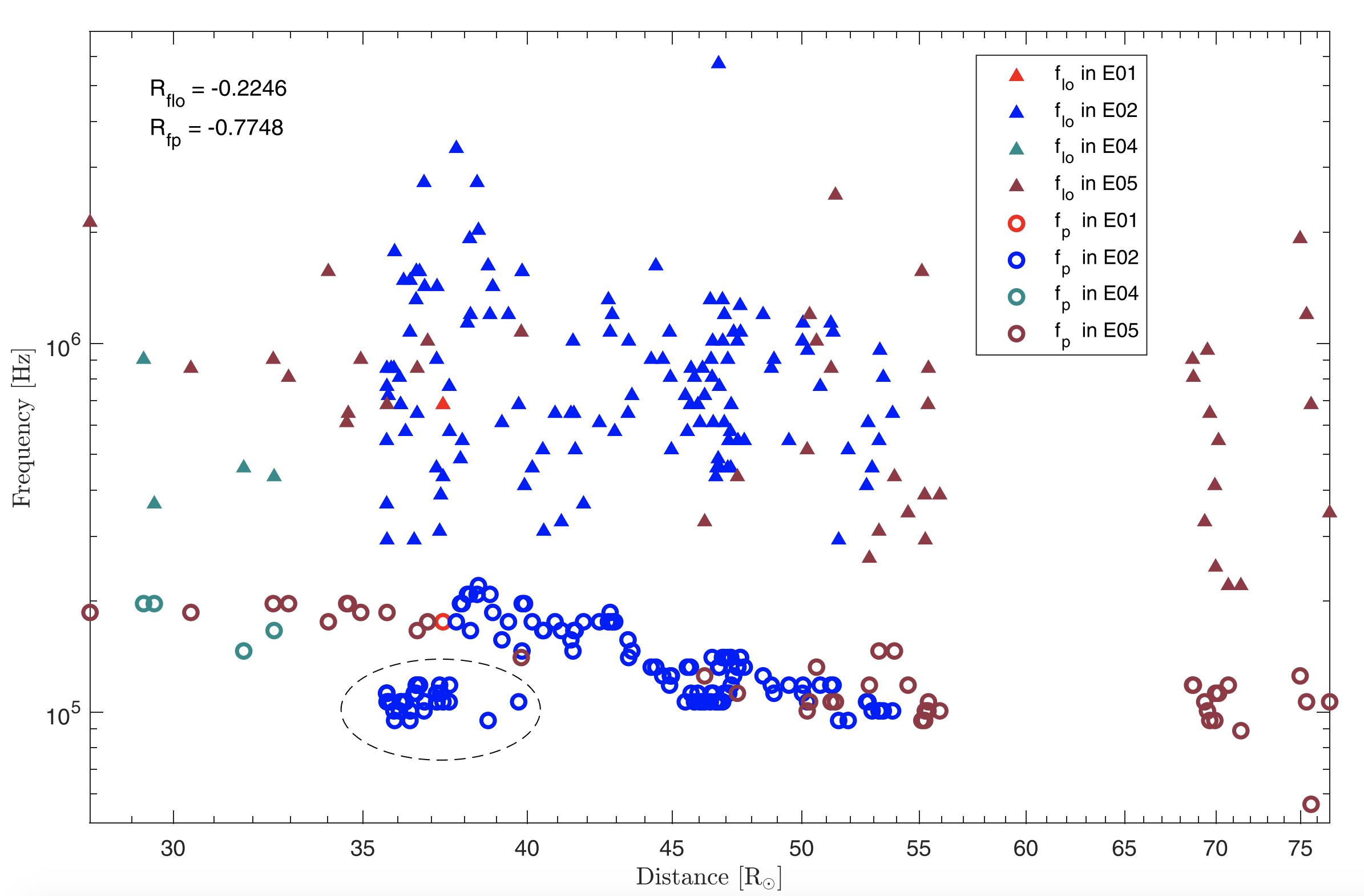New Discovery of Type III Radio Bursts Observed by Parker Solar Probe
Recently, researchers from Purple Mountain Observatory of the Chinese Academy of Sciences have used the radio data observed by NASA’s Parker Solar Probe (PSP) within 0.25 AU (during PSP’s encounter phases) to study the low frequency cutoffs of the IP type III bursts. PSP is a spacecraft that was launched on 2018 August 12 and could fly to a closer distance to the Sun than any other previous spacecraft.
It is shown that the distribution of the cutoff frequency is higher than that of the PSP’s local plasma frequency. One can also find that f lo is independent of the spacecraft’s position and f p decreases with the distance if the events with relatively lower f p in 35-40 Rs circled by the black dashed line are excluded, which are associated with a high velocity solar wind stream with low density. These results are consistent with previous studies. On the other hand, the f p mainly ranges from 50 to 250 kHz, which is much higher than that observed by Ulysses and Wind (3-50 kHz). It is easy to be understood because PSP is much closer to the Sun than Ulysses and Wind, and its ambient electron density is higher. However, there is a significant difference between the distributions of f lo observed by PSP (200 kHz-1.6 MHz) in this study and in previous work based on Ulysses and Wind (20-300 kHz). Three possible reasons are proposed as follows:
1) Solar activity intensity in different observation periods is different and it can influence the magnetic energy release and the propagation distance of electron beams in active regions. Therefore, solar activity intensity may affect the cutoff frequency of type III radio bursts.
2) The criteria of event selection may also play an important role. We consider many events with shorter duration and weaker intensity than previous studies. These events may have much higher f lo .
3) The spacecraft located further from the Sun may be hard to receive the emission of weak bursts with higher cutoff frequencies due to the radiation attenuation effect, and thus the statistics of f lo observed especially by Ulysses only covered the stronger events with lower f lo .
The scatter plot of cutoff frequency f lo and spacecraft’s local plasma frequency f p versus the distance of PSP from the Sun is shown in Fig. 1. The statistics of multipoint observation by spacecraft like PSP, Wind, or Solar Orbiter may provide more details about the influence factors of the low frequency cutoffs of type III bursts in the future.

Fig. 1 Measurements of characteristic frequencies ( f lo and f p ) of 176 type III events vs. the corresponding distances of PSP from the Sun. The solid triangle and the hollow circle indicate ( f lo and f p ) , respectively. Different colors of marks denote different encounter phases of PSP. (Image by MA Bing and CHEN Ling)
This work has been published in The Astrophysical Journal Letters. The first author is MA Bing, a PhD student, and the corresponding author is his supervisor, Dr. CHEN Ling. They are both from the Sun and the Solar System Plasma Group in Purple Mountain Observatory.